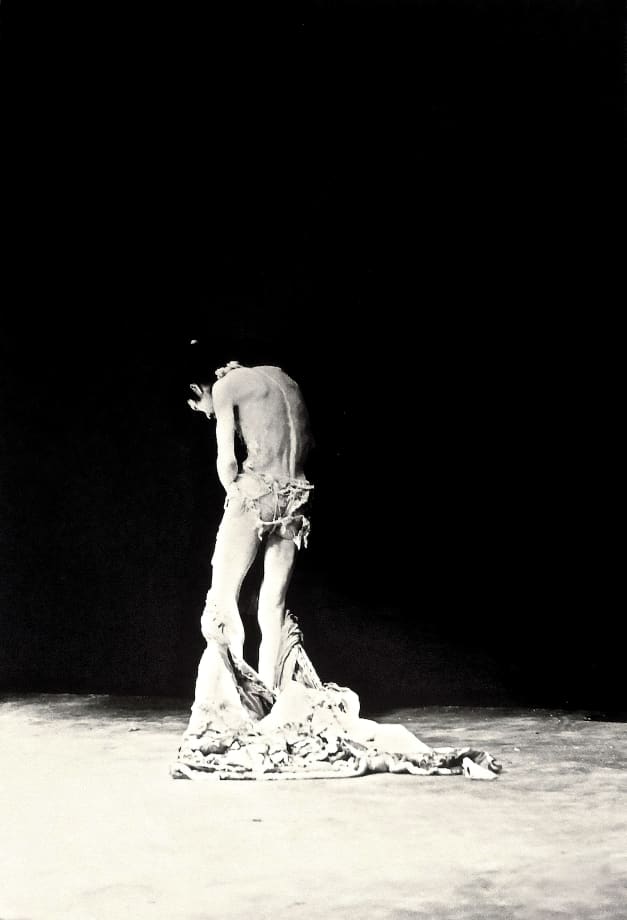TATSUMI HIJIKATA THE LAST BUTOH: Photographs by Yasuo Kuroda
Nonaka-Hill is delighted to present The Last Butoh, an exhibition of photographs by Yasuo Kuroda featuring Tatsumi Hijikata and company in his final performances. As with Hijikata’s previous photographic collaborations, Kuroda’s work confronted the inherent problems of representing ankoku butoh—its invisible but immanent qualities that hover between appearance and obscurity. For it had long been a preoccupation of Hijikata to transmute his dancing body—in scenes of cruelty and abject emotion—into still or moving images––even if this conflicted with the visceral nature of his art form. As such, these are less documents of his dance performances than newfound contributions to the inherent dilemmas of his project. They exist in their own dimension separate from live performance.
Kuroda’s photographs depict two final performances in 1973, Quiet House and Yobutsu Shinto, that preceded Hijikata’s self-seclusion until his death in 1986. They therefore confer these ephemeral events a frisson of elegiac and metaphysical feeling. It was, after all, the dead who Hijikata thought to be his audience: “I would like to have a person, who has already died, die over and over inside my body…I may not know death, but it knows me,” he once said. Representing dances of the dead and for the dead, Kuroda’s photographs captured them emerging from inky blackness into searing whiteness, starkly amplifying Hijikata’s deft physical vocabulary. One frequently sees Hijikata’s blurred face, entranced and blank, as his body was engaged in various moments of staccato movement; in other images he emoted daemonic violence or comedic pathos—or both. There are processions of dancers in costume: one mise en scène features them with woolly erect phalluses; and another, from presumably the same performance, globes sat atop each of their heads in an apparent daze. Divorced from the context of the entire performances, these moments in time (and out of it) have retained a mystical and emotional weight in the 50 years since they took place.
Born in 1948, Yasuo Kuroda originally studied economics at Rikkyo University, Tokyo. Around this time, he began visiting Asbestos Hall, Hijikata’s performance space, where he assisted him and his family with practical matters, but never saw a single performance. After leaving Asbestos Hall for a period, Hijikata suddenly invited him to photograph Quiet House there; it was Kuroda’s first witnessed butoh performance, which was produced without rehearsals. Hijikata later invited him to photograph Yobutsu Shinto, a collaboration outside of Asbestos Hall. Unbeknownst to everyone at the time, it was to be his last public performance. Hijikata never was to see the fruits of Kuroda’s efforts, nor has the public until now. The mandala pattern in which Kuroda’s photographs are arranged attest to the lengthy personal journey they took from initiation to exhibition. It also alludes to an essential cycle inherent to Hijikata’s butoh, that of atrocity and beauty, which was captured for all time through the collaboration of body and camera.
